Usage-based pricing is becoming more popular, and more high-revenue companies are reaping the benefits of implementing this model.
In this quick list of examples, we’ll share how 14 SaaS companies are successfully using this type of pricing strategy.
We’ll go over:
- A quick definition of usage-based pricing and why it has become more popular
- A list of the top 14 usage-based pricing examples
Let’s get started.
What is usage-based pricing exactly?
Usage-based pricing is a billing model where customers are charged based on how much they actually use a product or service, not a flat monthly fee.
This might seem like common sense, but it's a big deal in the world of SaaS. Traditionally, most companies locked customers into subscriptions, whether they used their software a little or a lot. Usage-based pricing flips that script, making the price match the value customers get.
Why the shift to usage-based pricing?
There are a few reasons why we're seeing this shift toward usage-based pricing:
- It's just fairer: Customers only pay for what they use, which feels more transparent and aligned with their needs. This often leads to happier customers who stick around longer.
- It removes barriers: New customers can dip their toes in without committing to a significant upfront cost. This makes trying out new software much less risky.
- It fuels growth: Businesses using usage-based pricing are seeing real benefits. They can adjust prices quickly to match demand and gain valuable insights into how customers use their products. This all adds up to more revenue potential.
Usage-based pricing is on the rise
Usage-based pricing isn't just a trend; it's becoming the norm. A recent report found that nearly half of all SaaS companies (45%) have already switched to usage-based pricing. And it's not slowing down — a whopping 61% of companies are either testing or actively planning to launch their own usage-based pricing models.
Usage-based pricing is steadily becoming ubiquitous
Usage-based pricing started with the big players in cloud computing (like Amazon Web Services and Azure), where it made sense to bill for customers' computing power.
But it's now showing up in everything from email marketing platforms like Mailchimp to AI-powered writing tools. It's a versatile model that's finding its place across the entire tech landscape.
Top 14 usage-based pricing examples
#1 Amazon Web Services (AWS)
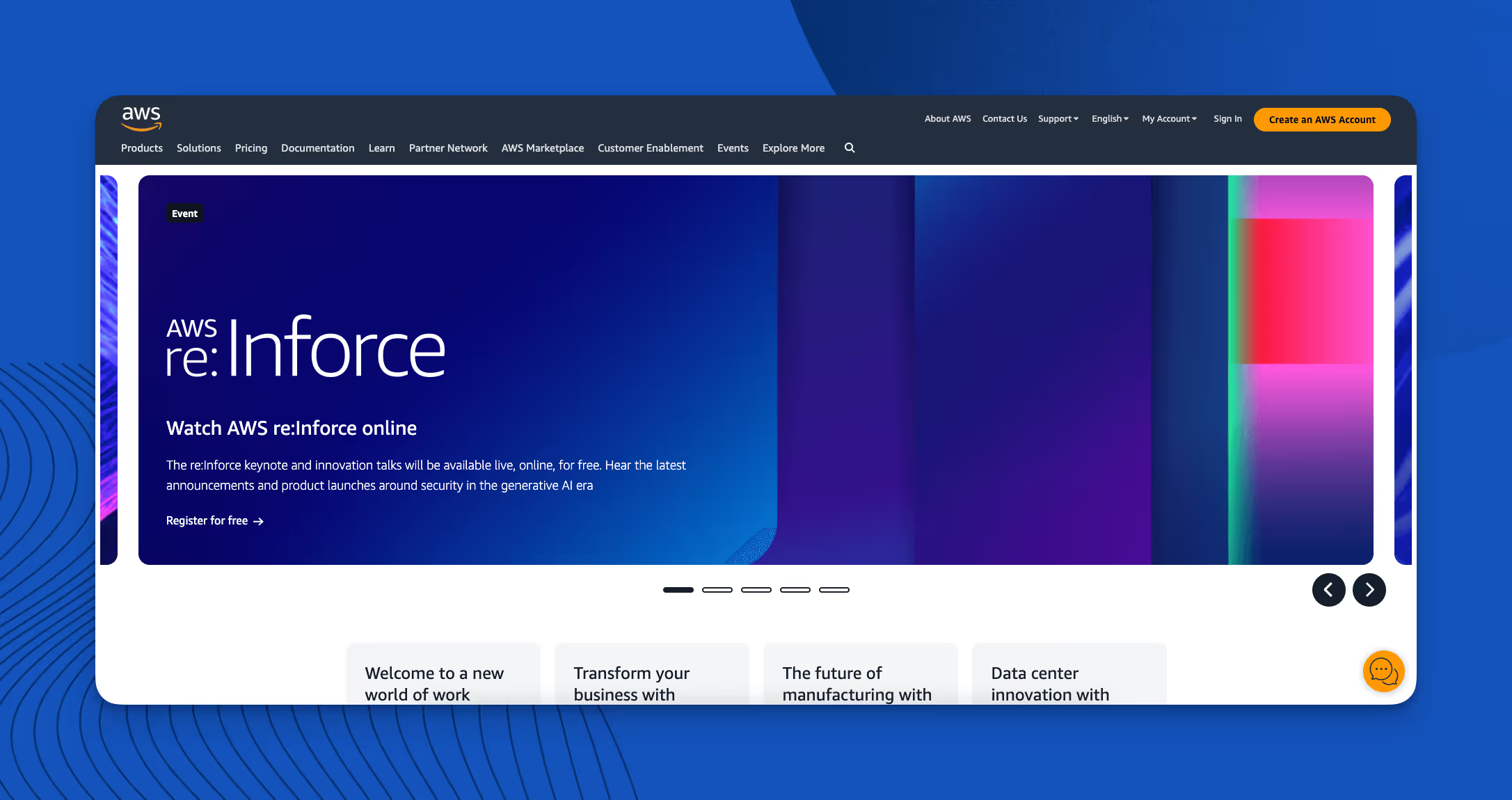
A titan in cloud computing, AWS demonstrates the power of usage-based pricing. It offers a wide range of services and charges customers only for the resources they consume.
This model's pricing has some interesting nuances that make it attractive to businesses of all sizes:
- Free tier: Allows new or low-usage customers to try AWS services for free.
- Reserved instances: Provides discounts for customers who commit to long-term usage.
- Spot instances: Offers unused resources at lower prices for flexible workloads.
This multi-pronged approach is a big part of why AWS has captured such a large chunk of the cloud computing market. It offers options to suit different needs and budgets, and the price is always tied directly to the value customers receive.
#2 Snowflake

This cloud-based data warehouse lets businesses store and analyze massive amounts of data, charging only for what they use.
Snowflake's model is based on:
- Storage used: Cost is tied to the amount of data stored, with automatic compression to maximize value.
- Compute power used: Measured in credits, reflecting the complexity and time of data processing tasks.
This allows businesses of any size to scale their usage and costs according to their needs, making it an adaptable solution for data management.
#3 Azure

Azure, Microsoft's cloud computing platform, thrives on a consumption-based model, charging customers only for the resources they use. This applies to a wide range of services, including virtual machines (VMs) billed by the minute, backup solutions, and logic apps.
Azure offers flexible pricing options:
- Pay-as-you-go: The ideal model for varying workloads.
- Reserved instances: Discounted pricing for committed long-term usage (similar to AWS).
- Spot VMs: Discounted VMs for flexible workloads, with the possibility of service interruption.
#4 Twilio
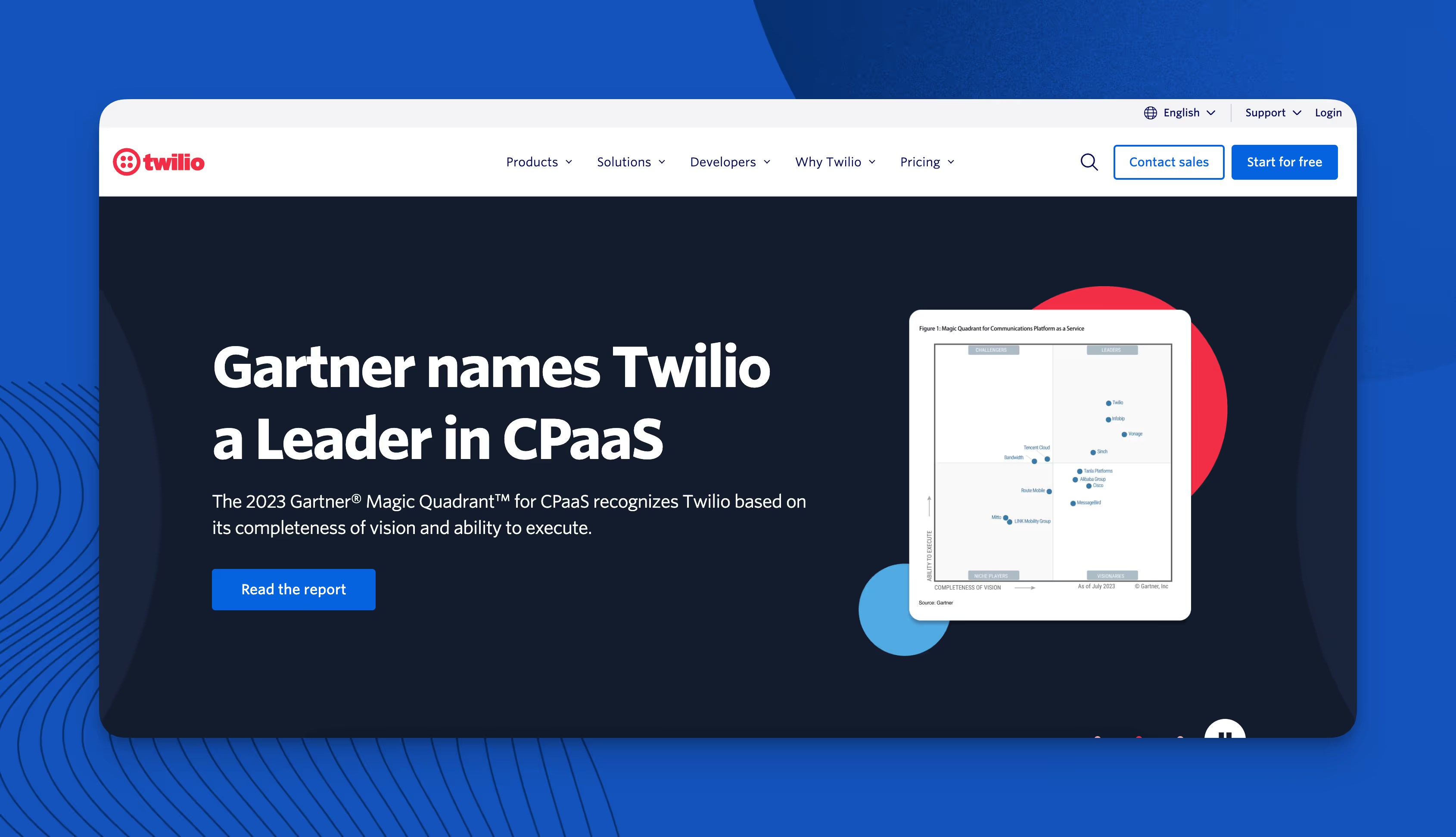
Twilio is a cloud communications platform that empowers businesses to add features like phone calls, text messages, and video chats to their applications.
Their pricing model is as adaptable as their services:
- Pay-as-you-go: In the core model, customers pay only for the communication services they use, making it ideal for businesses with varying needs.
- Volume discounts: For customers with higher usage, Twilio offers discounts that increase with the volume of communication.
- Committed use discounts: Businesses that can commit to a certain level of usage upfront can get additional discounts.
This mix of pricing options means businesses can choose the best fit for their communication needs and budget without overpaying for unused services.
#5 Clearbit
Clearbit is an API-based tool that helps businesses gather valuable information about their potential customers. Instead of charging a fixed subscription, Clearbit's pricing is based on the number of API requests a business makes.
Clearbit's appeal goes beyond its pricing model:
- Easy integration: Clearbit connects with popular tools like Salesforce and Hubspot, making it easy for businesses to get the data they need right where they're already working.
- Real-time data: Clearbit provides up-to-date information, so you can be confident that you're making decisions based on the latest data.
#6 Zapier
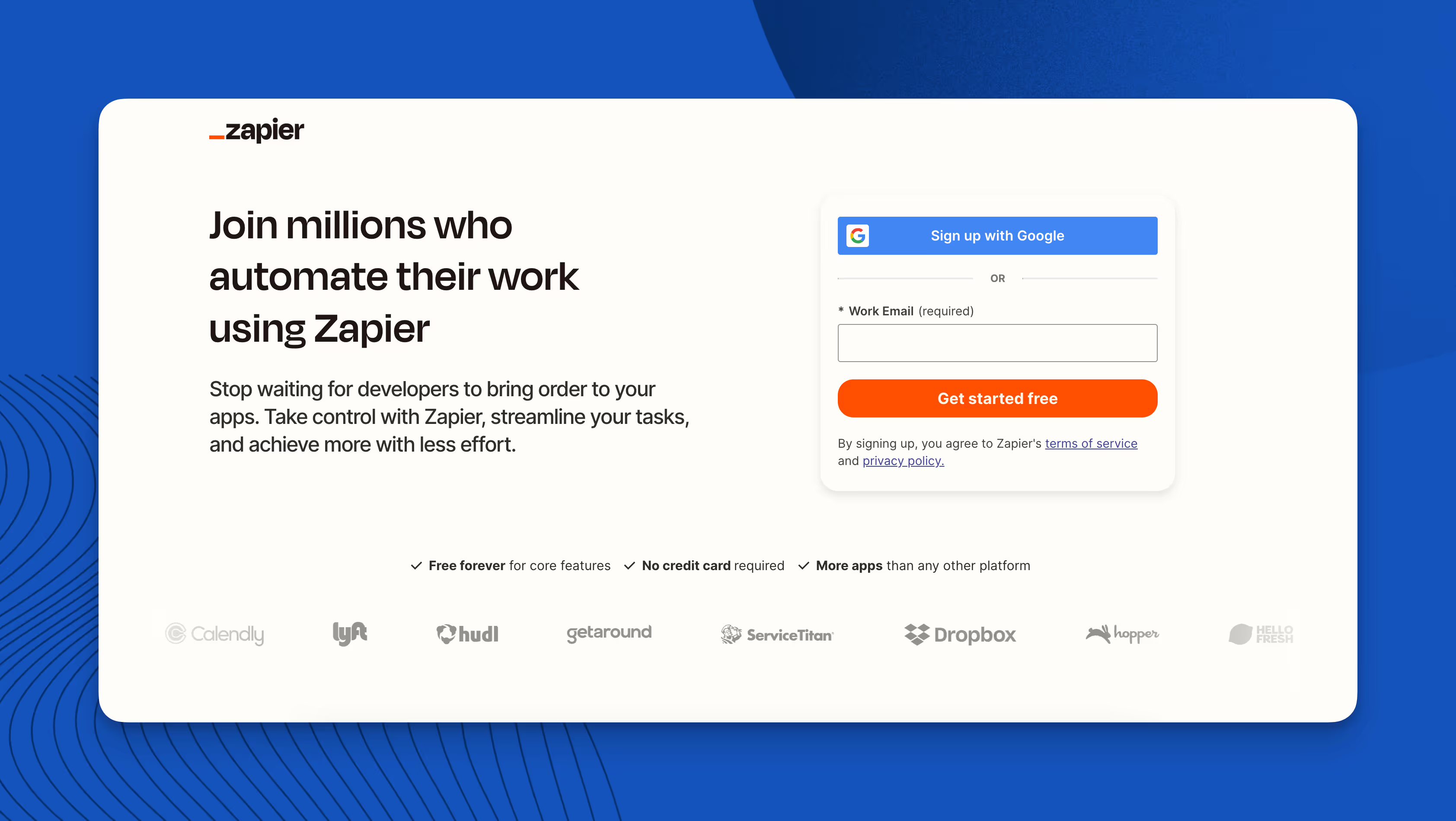
Zapier is a leading platform for automating workflows between different applications. Their pricing model reflects their focus on usage, charging based on the number of tasks performed and "zaps" used.
Zaps are pre-built connections between different apps, making it easy to automate tasks without coding.
Zapier's pricing model offers flexibility for businesses of all sizes:
- Freemium model: Zapier offers a free plan that allows users to create a limited number of tasks and zaps. This is an excellent way for users to try out Zapier and see if it fits their needs well.
- Premium tiers: For businesses that need more automation, Zapier offers paid plans with higher usage limits. These plans also include additional features, such as connecting to more apps and scheduling tasks.
#7 Mailchimp
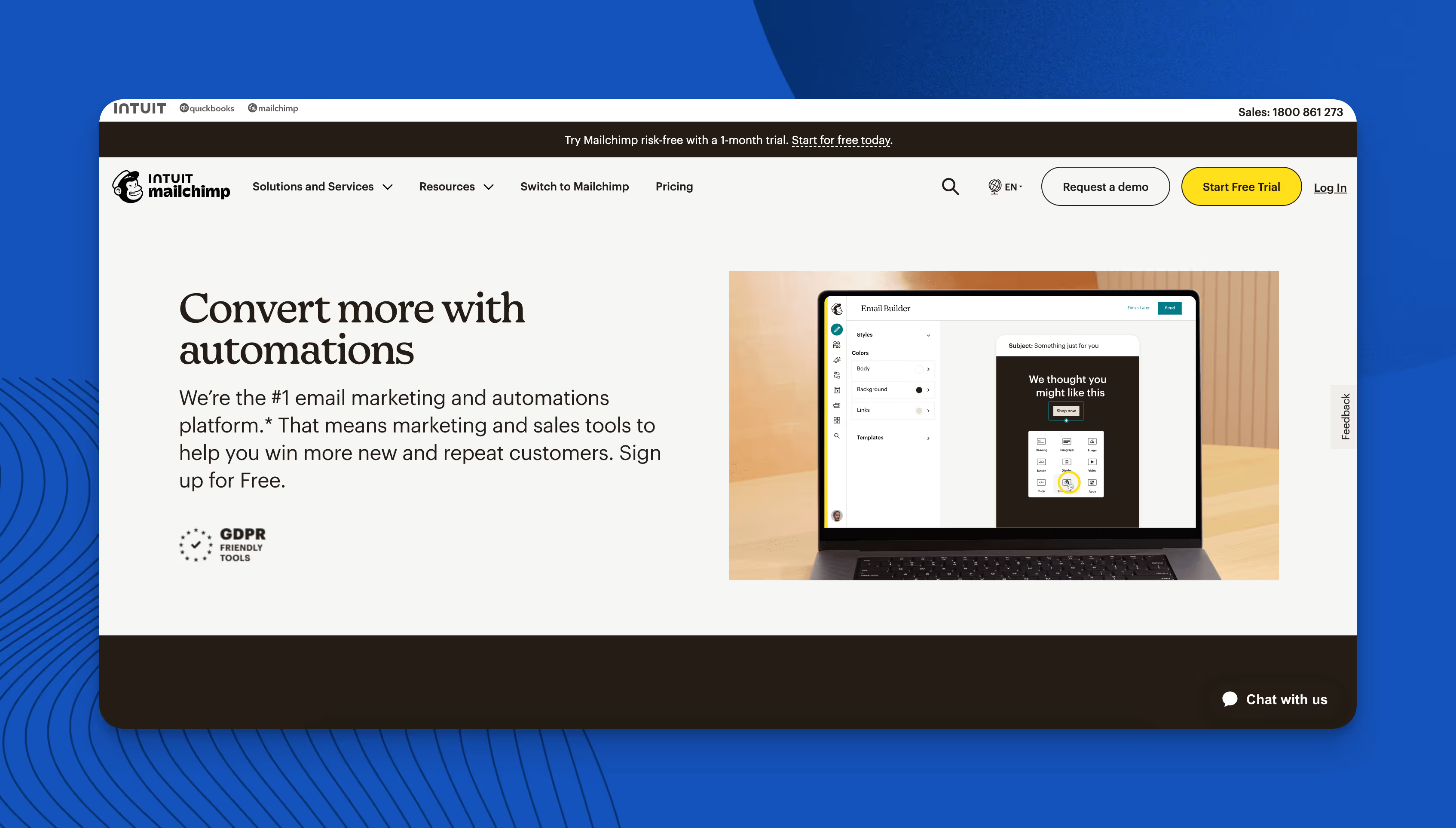
Mailchimp, a popular email marketing platform, understands that not all businesses have the same needs. That's why they offer a usage-based pricing model that caters to a variety of sending patterns:
- Subscriber-based: The core pricing is determined by the number of subscribers a business has on its email lists. The more subscribers, the higher the cost.
- Email volume: Mailchimp also factors the volume of emails sent monthly. The more emails the company sends, the more it pays.
- Pay-as-you-go: For businesses that only send emails occasionally, Mailchimp offers a pay-as-you-go option. This allows them to buy email credits as needed, avoiding paying for a full subscription when they don't need it.
This combination of options means businesses can choose the pricing that aligns best with their email marketing strategy, whether they're frequent senders or only send occasional campaigns.
#8 Jasper

Jasper is an AI copywriting tool that's gaining traction by making content creation faster and easier. Its pricing model is simple: Customers pay based on the number of words Jasper generates for them each month.
But there's more to Jasper's pricing than meets the eye:
- Tiered plans: Jasper offers different plans to match varying content needs. The Starter plan is excellent for short-form copy, while the Boss Mode and Business plans unlock more features for crafting long-form content and capturing brand voice.
This approach allows businesses to start small and upgrade as their content needs grow. It also means they're only paying for the amount of content they actually produce rather than a fixed monthly fee that might not match their usage.
#9 Google Cloud Platform

Google Cloud Platform (GCP) is a significant player in the cloud computing space, and its usage-based pricing model is a key part of its appeal.
Like AWS and Azure, GCP offers a wide array of services, but customers only pay for the resources they consume, which translates into greater cost control and scalability. GCP charges customers based on the specific resources they use, such as computing power, storage, and network traffic.
This pay-as-you-go approach allows businesses to experiment, start small, and scale up as their needs grow. It's a flexible and cost-effective way to leverage the power of the cloud.
#10 Dropbox
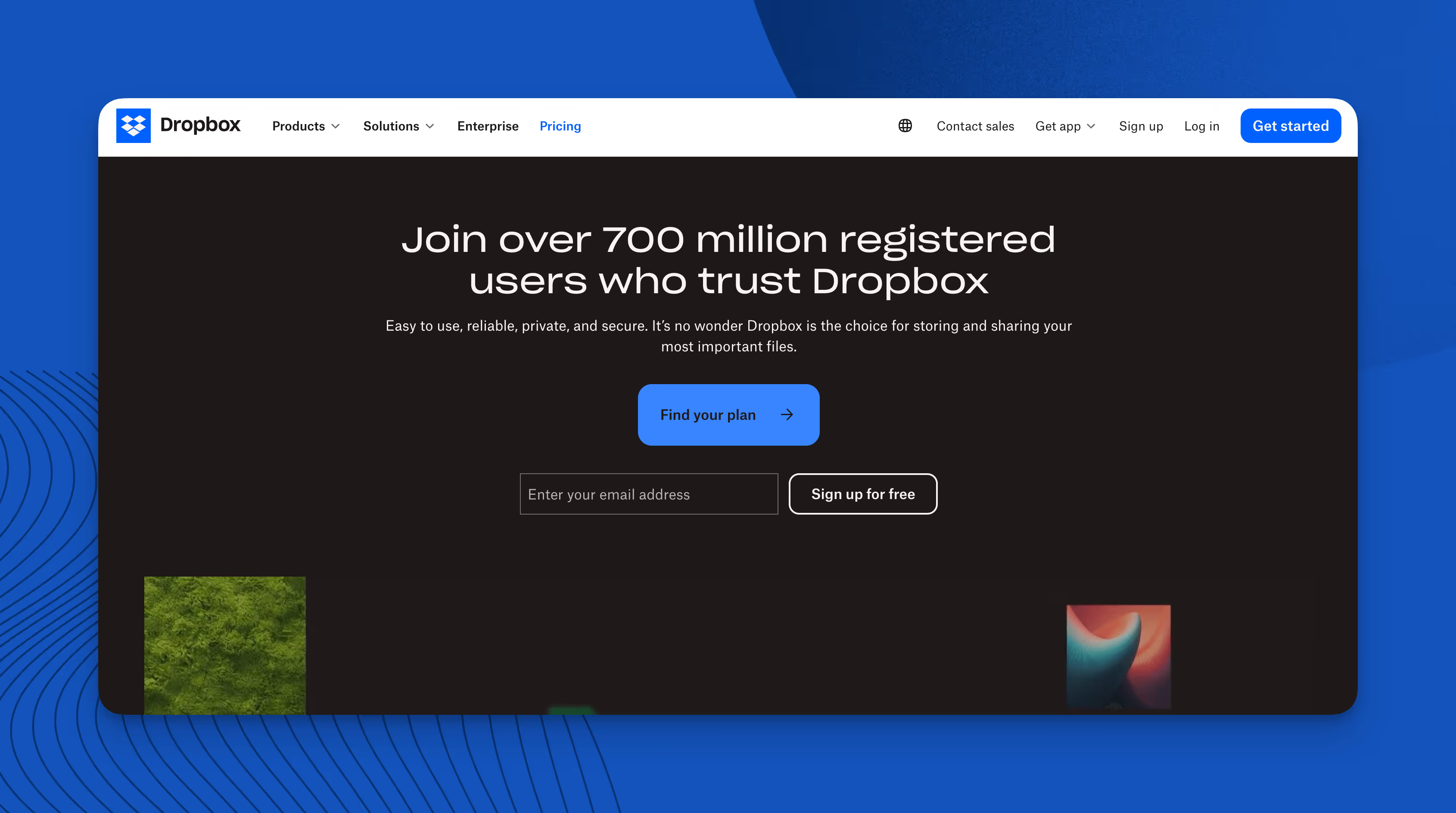
Dropbox is a popular cloud storage service that offers a freemium pricing model. The free plan provides users with limited storage space, while paid plans offer more storage and additional features.
Here's a breakdown of Dropbox's pricing:
- Free plan: 2GB of storage space.
- Plus plan: 1TB of storage space for $9.99 per month.
- Family plan: 2TB of storage space for $16.99 per month.
- Professional plan: 3TB of storage space for $19.99 per month.
- Business plan: Customizable storage and features for teams.
Dropbox's usage-based pricing model allows users to choose the plan that best suits their needs and budget. They only pay for the storage space they actually use, making Dropbox a cost-effective solution for both individuals and businesses.
#11 JFrog
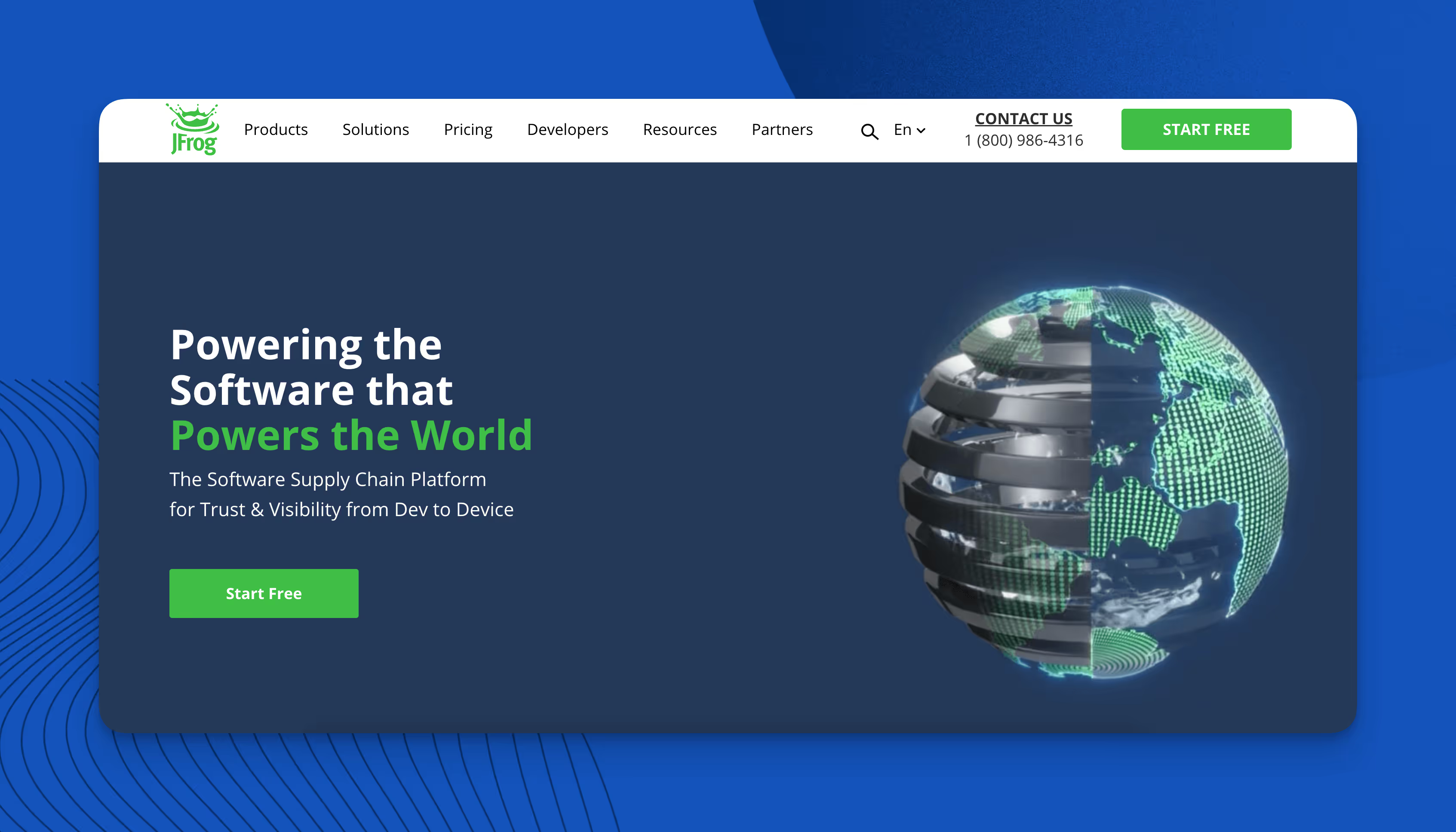
JFrog is a company that specializes in tools that help software teams build and release software quickly and reliably. It offers these tools in the cloud and charges based on usage.
JFrog's model is a good fit for companies that want to:
- Speed up software development: JFrog's tools are designed to help teams get software out the door faster.
- Improve software quality: JFrog also helps teams make sure their software is high quality and reliable.
- Only pay for what they need: With usage-based pricing, companies only pay for the resources they use, which can be a cost-effective option.
#12 Fastly
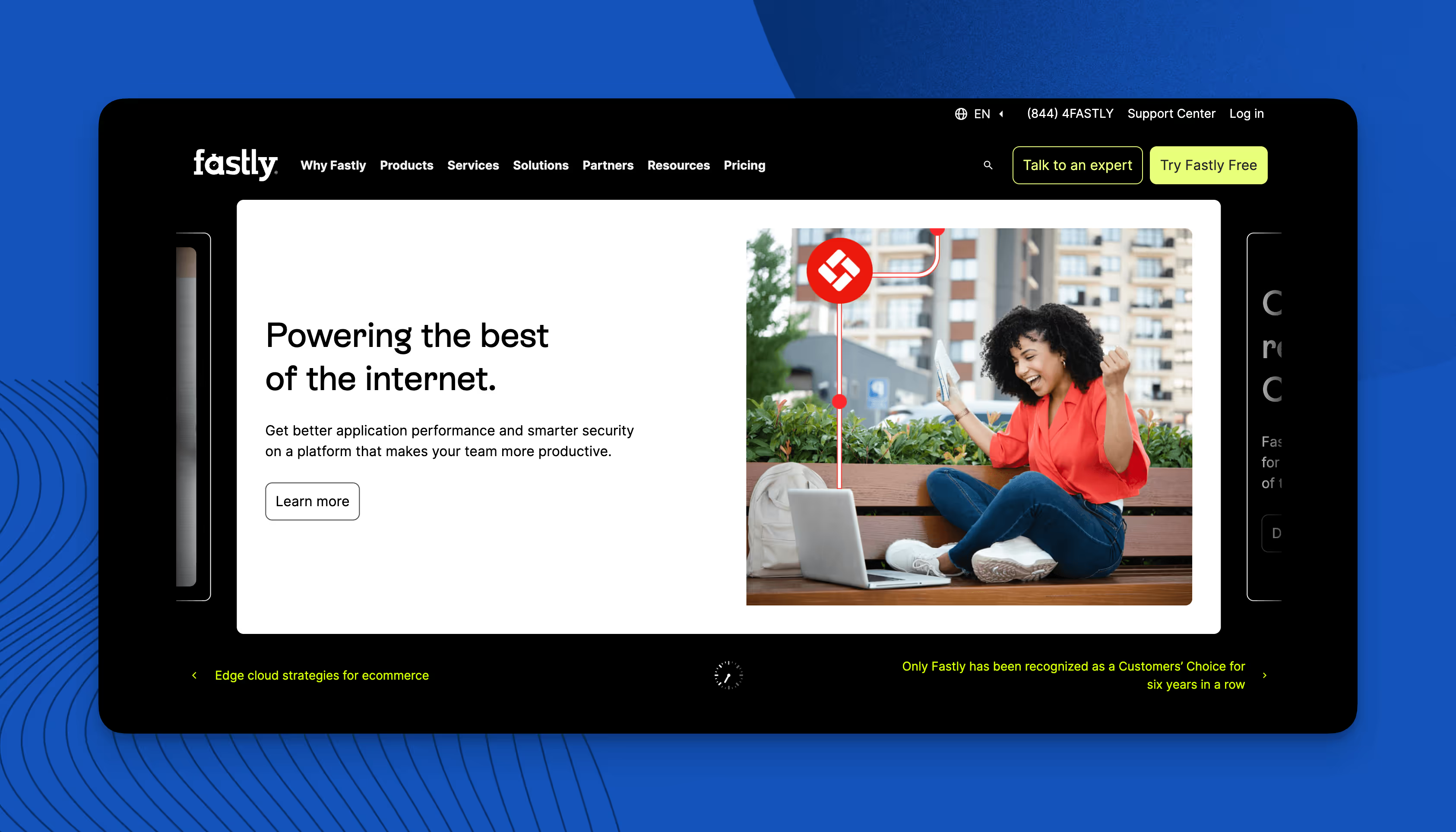
Fastly is a company focused on making websites and apps load faster. They do this by providing a content delivery network (CDN) and other cloud services, all with a usage-based pricing model.
Here's how Fastly's pricing works:
- Data transfer: The core cost is based on how much data is sent through Fastly's network. More data equals higher costs.
- Additional metrics: Fastly also factors in other metrics, such as the number of requests and the type of content being delivered.
By charging based on usage, Fastly incentivizes customers to optimize their content and reduce unnecessary data transfer, leading to a faster web experience for everyone.
#13 Elastic
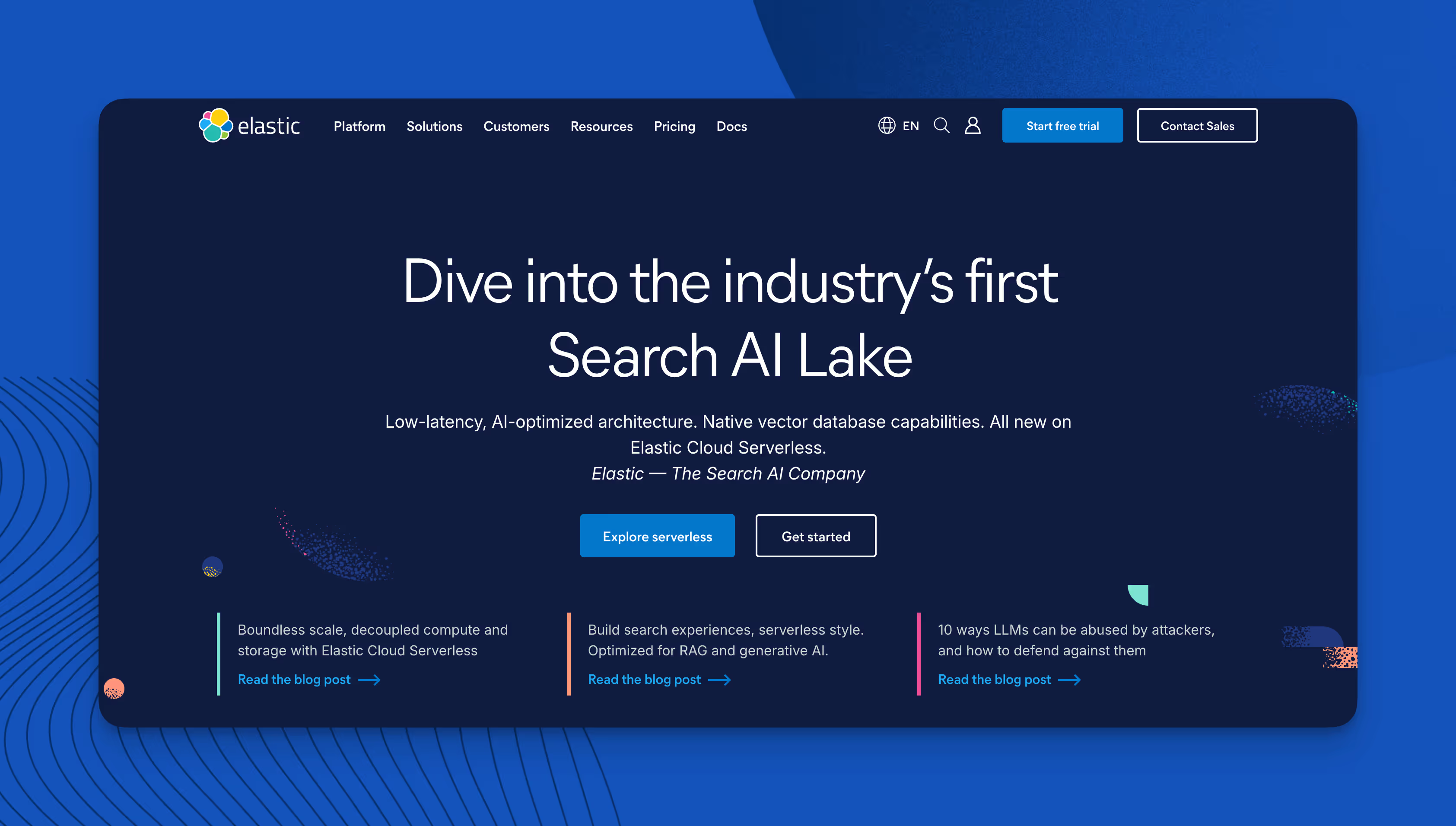
Elastic is an AI-based observability solution known for its powerful search, logging, and data analysis tools. It offers a usage-based pricing model that aligns with how businesses actually use their services.
Here's a quick look at Elastic's approach:
- Resource-based pricing: Customers are charged based on the resources their applications consume. This includes factors like storage, memory, and processing power.
- Industry agnostic: Elastic's solutions can be applied across a variety of industries, from tech companies needing robust log analysis to e-commerce sites requiring powerful search capabilities.
- Scalable solutions: Whether a business is small or large, Elastic's offerings can grow with them. Customers can easily add or remove resources as needed, paying only for what they use.
This model provides businesses with a flexible and cost-effective way to leverage Elastic's powerful suite of tools, ensuring they only pay for the resources that directly benefit their operations.
#14 Datadog
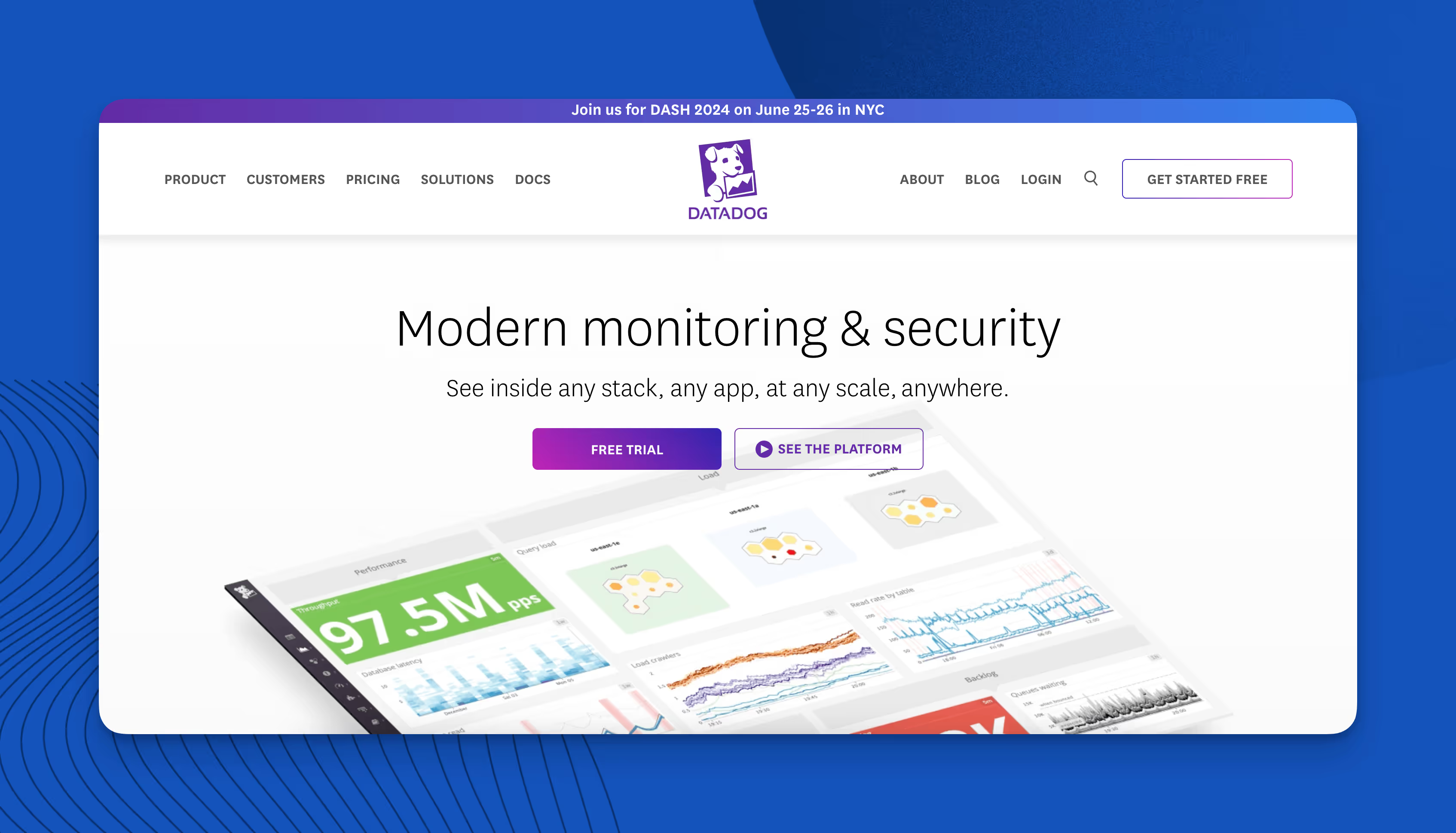
Datadog is an observability and security platform (similar to Elastic) and is a popular choice for businesses that must closely monitor their cloud applications and infrastructure. Their usage-based pricing model makes it easy for companies to get the monitoring they need without paying for more than they use.
Here's what sets Datadog's pricing apart:
- Volume-based: The core cost depends on how much data users monitor. They'll pay more if they have more servers, applications, or logs.
- Granularity: Datadog offers different pricing tiers based on the level of detail customers need. Customers who need real-time, granular monitoring will pay more than those who only need basic checks.
This approach provides a few key advantages:
- Comprehensive monitoring: Datadog can track almost anything in a company’s cloud environment, from basic server health to detailed application performance.
- Scalable pricing: As the customer’s business grows, they can easily adjust their Datadog monitoring to match your needs.
By tying its price to the actual value customers get, Datadog ensures that businesses of all sizes can afford to keep their cloud operations running smoothly.
Next steps
After reading our full list of usage-based pricing examples, you should have a much clearer picture of why and how high-revenue companies are successfully implementing it.
You can achieve similar results using a billing platform specializing in usage-based billing.
Orb is a done-for-you billing platform that helps companies of all sizes charge customers fairly and transparently, thanks to its complete set of tools.
Here’s how Orb solves billing for you:
- Easy usage data integration: Orb's robust APIs and integrations effortlessly connect with your data warehouse, enabling smooth usage data collection with minimal setup.
- Customizable usage metrics: Tailor your billing to your business model by defining the exact metrics you want to track. Orb supports both simple and complex calculations, ensuring you charge for what matters most.
- Intuitive pricing plan creation: Build the perfect pricing structure without coding expertise. Orb's Plan Builder simplifies the process, allowing you to create per-unit, tiered, or hybrid plans that align with your customer's needs.
- Effortless automated billing: Let Orb handle the heavy lifting of usage tracking, cost calculations, discounts, and invoicing. This will save valuable time and reduce the risk of errors.
Learn how Orb can help you execute a hassle-free usage-based billing strategy.



